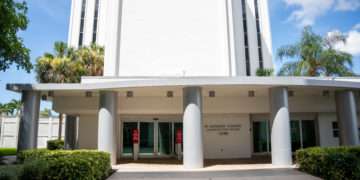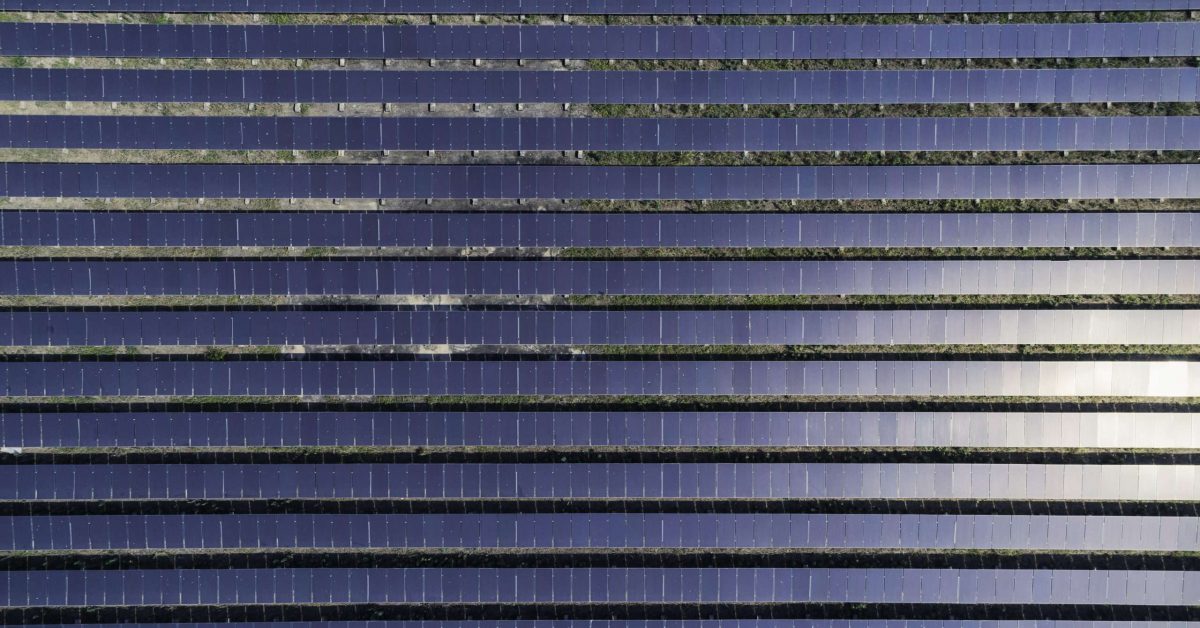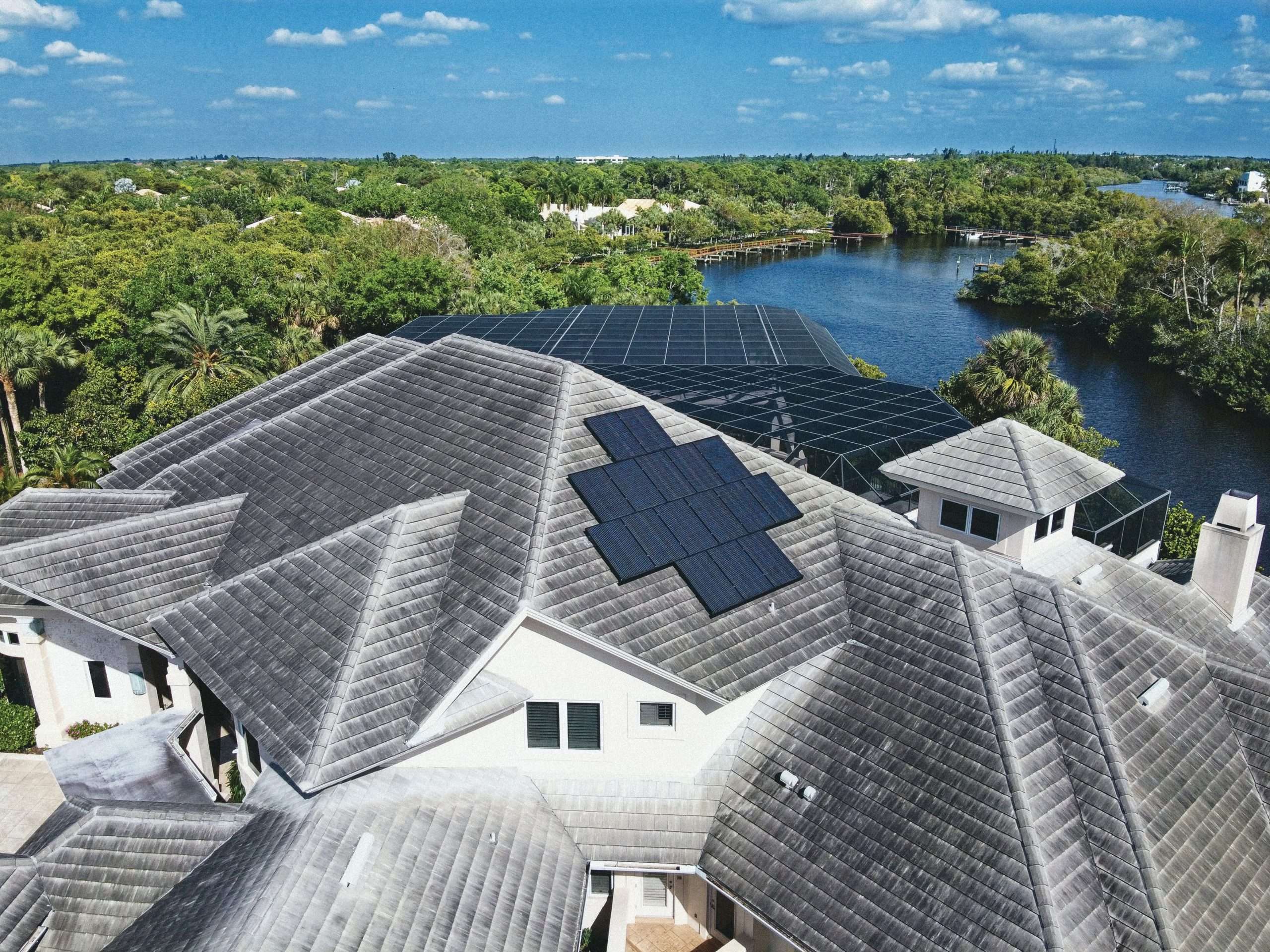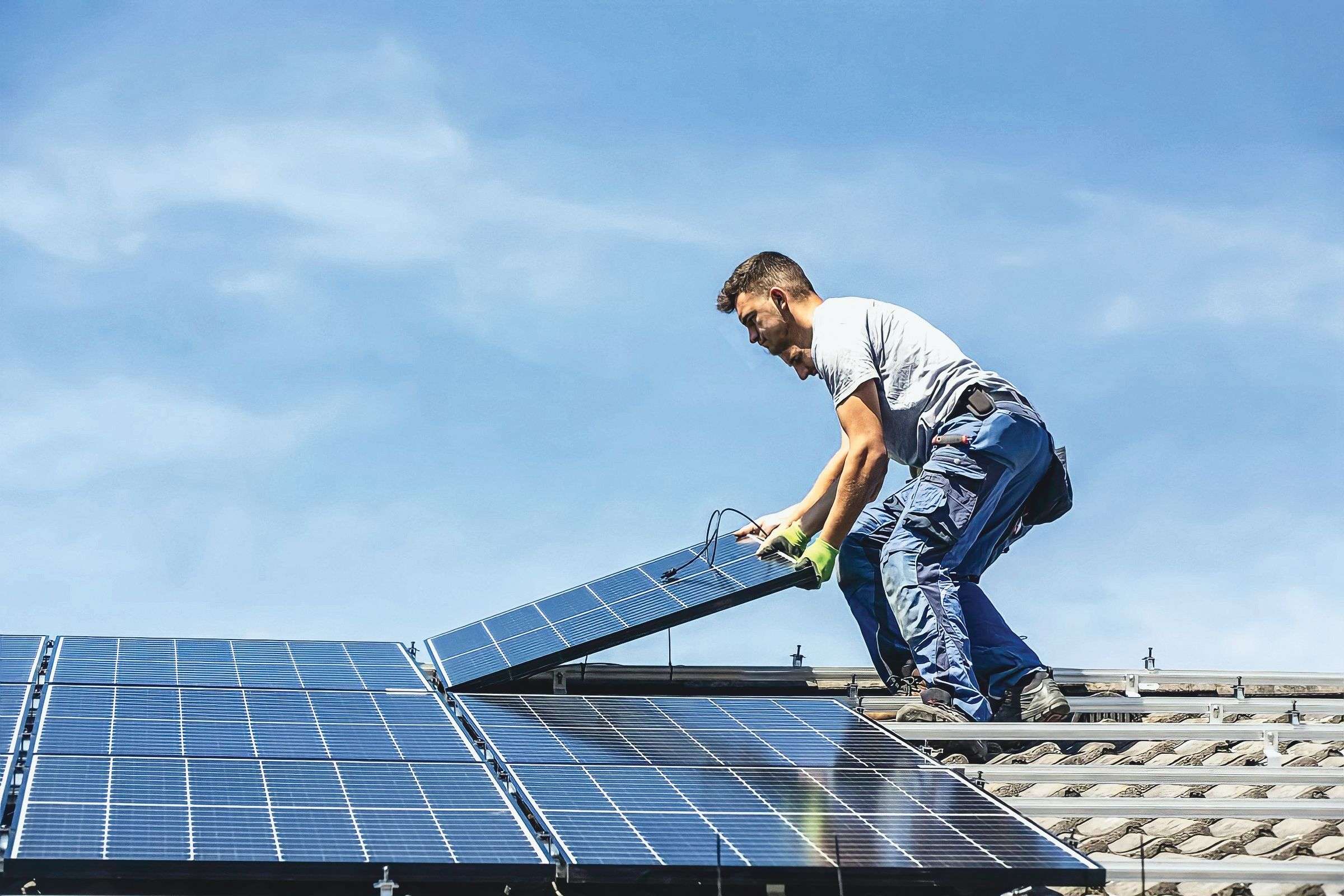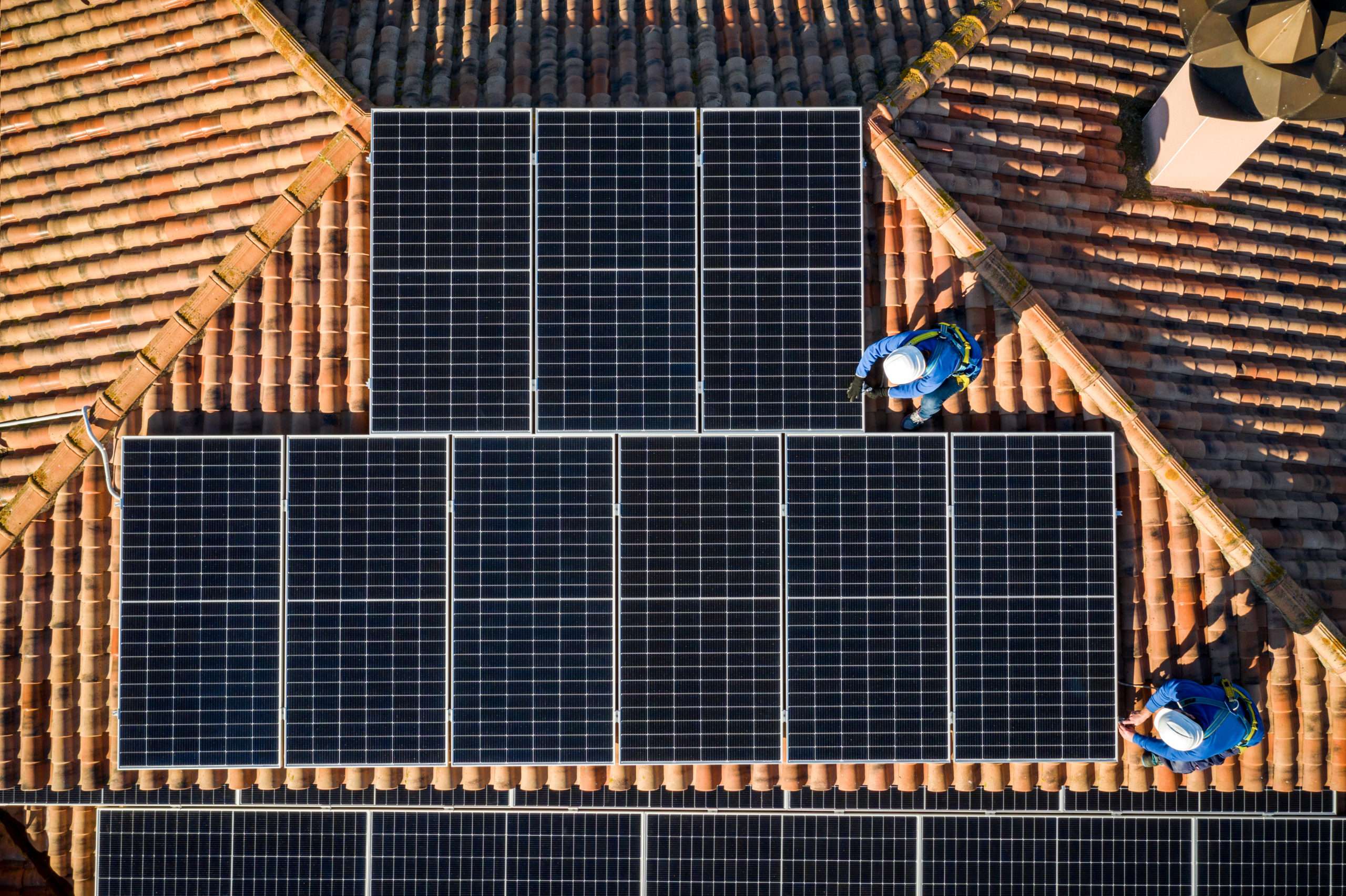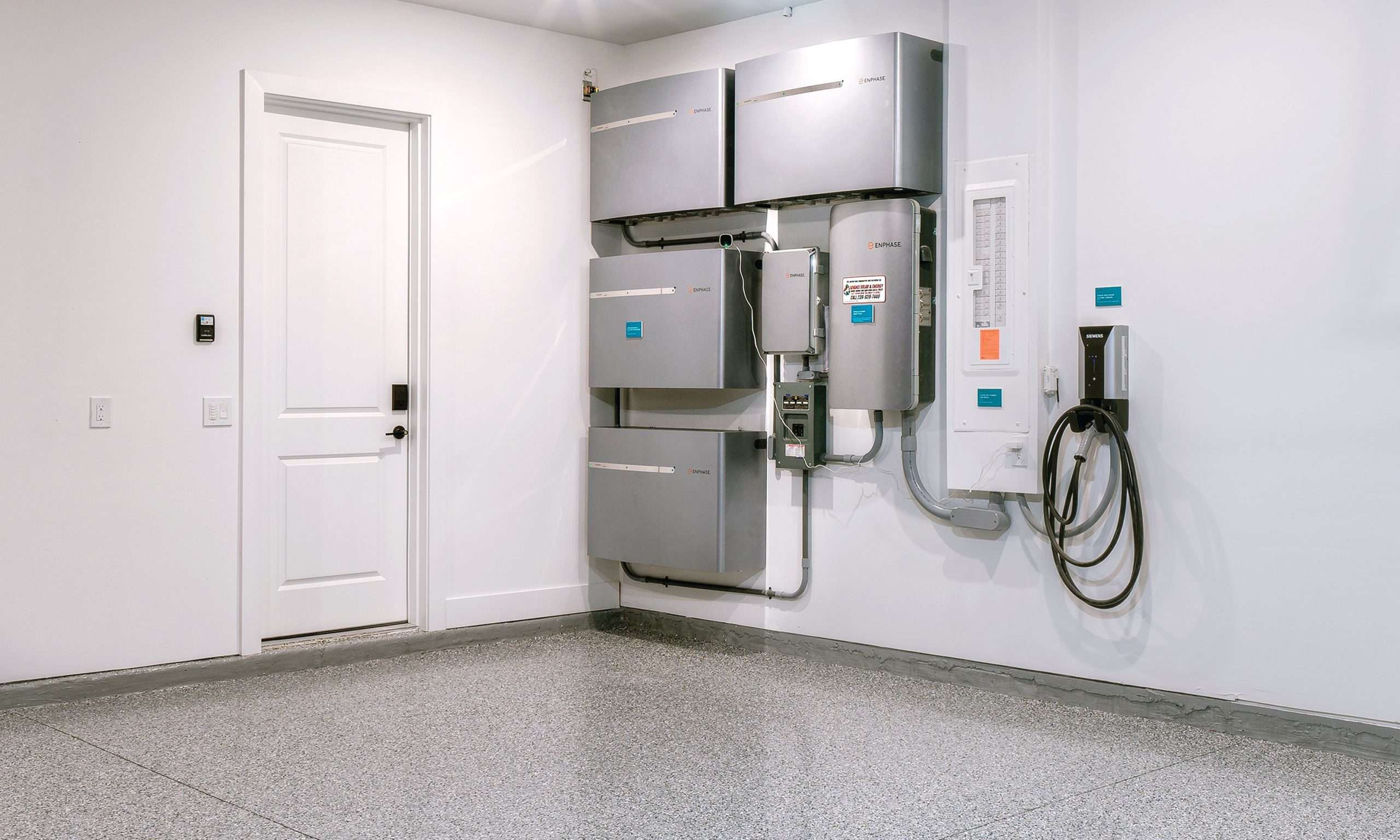The sun still shines for solar power businesses and homeowners in the Sunshine State. Both had been hurrying to install systems on Southwest Florida rooftops before the end of next year, when federal tax credits were set to expire. That’s when the skies would have been getting cloudier for the solar industry. The 26% tax credits this year and 22% next year were ending at the end of 2023. This left homeowners and businesses clamoring to cash in on the benefit. Now, they can settle down.
As this issue of Gulfshore Business went to press, U.S. Senators Joe Manchin of West Virginia and Chuck Schumer of New York struck a $430 billion deal to fund what’s called the Inflation Reduction Act. It could have been called the “Solar Surge Act,” as about $369 billion of the legislation will go toward clean energy initiatives, including the return of a 30% federal tax credit homeowners and businesses could receive for going solar. Those will be in place through 2032. The Senate and the House of Representatives approved the act; and President Joe Biden signed it into law on Aug. 16.
The urgency and uncertainty leading to this moment created quite the conundrum. Solar salespeople may have been taking advantage of that. Solar panels tend to have 25-year warranties. While the consumers would be saving money over the long haul of the next 25 years—“owning their own power instead of leasing it” as the solar salespeople stress—those who had not done due diligence ran the risk of getting charged more than market price by the solar companies.
Even a comparatively bad solar deal is likely to save consumers money when compared to what Florida Power & Light or LCEC power rates will do over the next two and a half decades, said Mark Wilkerson, a solar industry consultant and expert who has worked in the business for almost 40 years. Wilkerson hired Florida Solar Design Group to put solar on his own home in Babcock Ranch. He chose the Fort Myers-based company, he said, because they’re doing business the right way. But homeowners should seek multiple quotes and search for the best solar deal as opposed to accepting the first one they see.
“Their job is to max out how much solar they can get on your roof—whether you need it nor not,” Wilkerson says of the “door knockers,” the solar salespeople who go door-to-door. That’s what he wanted to avoid. “It’s not about what you need. It’s about how they can maximize the profit on your house.”
The flip side is that some salespeople who see the sticker shock on prospective clients’ faces will end up offering a smaller number of solar panels. Those clients then will be living in a “hybrid” house, with a percentage of their money going toward the solar setup and the rest going to the power company.
Buyer, Be Aware
There are plenty of do’s and don’ts when scouting prospective solar companies, Wilkerson said. Tesla offers the cheapest products, but a Google search will suggest it is lacking in the customer service department. This could be paramount given the typical 25-year warranties and the long-term investment being made.
“You want somebody local, that’s been around for more than two or three years,” Wilkerson says. “You want locally owned. And you want them to have their own installers. That’s the key thing. If there’s a problem—and I’ve seen it out here several times—the subcontractor will say, ‘It must be the company’s fault.’ And the company will say, ‘I sold you something that worked. It must have been the installers.’ When they’re all under one roof, there’s nobody else to point to.”
John Bishton of Fort Myers installed his own system 12 years ago. He’s an electrician and a solar system inspector who does inspections as a contractor with Xando Energy, a solar company that has its stateside headquarters in Fort Myers.
“Go with the one that’s got the price and that’s been a while in the area,” Bishton says. “The other big thing is the warranty and the service. You can pick and choose which one you want. Negotiate with them and see where they’re at.”
When seeking multiple quotes, consumers may find it tough to get an apples-to-apples comparison. Ask the salesperson for the price per watt, which is determined by dividing the system’s price by the estimated kilowatts the system will provide. If that price isn’t close to $3 per watt, you’re probably overpaying, Wilkerson and Bishton each said. However, the price per watt will vary on the type of home, the roof, the size of the system required and the shade.
“Negotiate with them,” Bishton says. “Get the price per watt down as low as you can. It’s like buying gasoline. Some of them you’ve got to pay $4.75 a gallon. Some of them, you’ve got to pay $4.25. Some of the numbers, you’ve got to watch it.”
Having a hybrid system also might be worth exploring, Bishton said—for example, if the home’s rooftop has too much shade.
“I probably wipe out 75% of my power bill,” Bishton said of his system. “It’s nice to zero out if you can. You get more bang for your buck. But the system will still cost you more.”
Jeff Cherrie, a Fort Myers real estate agent, asked a few neighbors with solar on their homes for recommendations. Based on that, he chose Sunergy, based in New Port Richey.
“In my case, I’ve got a lot of things hooked up to my house,” Cherrie says of why he went solar. “It just worked out well for me to do it. I’ve got an RV hooked up to it 12 hours a day. My bill was too high. I like my house cold. I talked to a few neighbors around the area; this one just seemed like the best option. It seemed like a no-brainer.”
Large-Scale Solar
Bailey’s General Store has been operating on Sanibel Island since 1899. It has had solar panels on its roof since 2016, when co-owner Richard Johnson decided to hire Florida Solar Design Group and spent $240,000 on 180 solar panels. Johnson helped organize a Sanibel solar cooperative; with several island businesses using the same company, they were able to take advantage of economies of scale and get better pricing, he said.
“When I got back here in 2004, our average electric bill was about $25,000 per month,” Johnson says. “My wife and I were in the process of purchasing the business from her father. We couldn’t afford 25 grand a month. We started looking at ‘How do we reduce?’”
Johnson did what solar installers recommend doing first: upgrading outdated appliances to more energy-efficient ones. “We put ourselves on a kilowatt diet,” he says.
That first solar project paid for itself in about two years, Johnson said. In 2020, Bailey’s put on an additional 300 solar panels for $260,000. This fall, the store plans a 6,000-square-foot expansion project.
“Well guess what?” Johnson says. “That gives me another 6,000 square feet to put solar panels on.”
That $25,000 power bill has been reduced to about $8,000 after switching to solar, Johnson said.
“I measure things in dollars and cents,” he says. “Not kilowatt hours. What’s my bill? I’m so happy, I’m doing it again. Especially with today’s power rates. FPL and LCEC made big jumps. Every kilowatt you save is one you don’t have to buy, and the price of energy is not likely to go down.”
Mercola, the online health food and supplement company, spent $1.3 million on a solar system that rests on the roof and carport roof of its Cape Coral headquarters, which includes a 10,000-square-foot store and showcase for its products. Mercola has 530 solar panels on the roof of its building and 490 more panels spread around the roof of its carports.
“So far, I’m pretty happy with it,” Steve Rye says. He’s the CEO of Mercola, which purchased its system from Advanced Green Technologies. “We haven’t had too many problems. I think there were a few surprising unknowns; we’ve had a couple of little pieces of equipment that have gone out. But on the front end of this deal, so far, so good. But the reality of it is getting through 20 years.
“We’ll see at 10 years what we will have paid for the system. We’re pretty much on track with the estimated power we were expected to generate.”
With rising costs, Rye said he was glad Mercola went solar in 2019 rather than now.
“We actually signed the entire cold proposal before everything went crazy,” Rye says of inflation and supply-chain issues. “If we had tried to put this thing on now, it would cost 50% more. It’s hard to say what’s going to happen. With more expensive electricity, it’s going to be a clear win. But we know that, as with anything with electronics these days, anything can happen.”
The Conservancy of Southwest Florida, a nonprofit organization that has a mission to protect water, land and wildlife in the region, received a $650,000 grant to incorporate solar power. It also went with Florida Solar Design Group, which installed 550 panels.
“We want to set an example,” says Victoria Pollock, the Conservancy’s chief financial officer. “It’s an example that we’re setting of who we are. Using a renewable source of energy is a smart thing to do.”
Prices, Panels and People
When shopping for solar power for your home, be prepared for some confusion. Many of the companies use different types of software to determine the number of panels needed. The systems are designed to offset—and be cheaper in the long run than—the annual energy usage from your local power company. But the same house could get quoted five different kilowatt sizes from five different solar companies.
“The difference in kilowatt that you are seeing could be from numerous different factors,” says Cory Keck, sales and operations manager with Fafco Solar, which has been based in Cape Coral since 1974. “Different computer software programs arrive at different conclusions as far as what the solar will make. There are different input variables such as panel efficiency, shading factor, roof angle and tilt.”
Fafco began solar heating pools in 1974 and began doing household solar systems in 1999. By 2018, the household solar business finally exceeded its pool-heating business, Keck said.
“Over the years, solar has become much cheaper and has now reached a point where it costs less than your existing power bill,” he says.
Florida Solar Design Group, headquartered in Fort Myers, was founded by two former Fafco employees. Owners Dominick Zito and Jason Szumlanski have seen a lot of competition come and go, especially in recent months. Because, like Fafco, they have diversified their business without relying solely on solar, they are positioning themselves to continue thriving even after those federal solar tax credits expire.
“Our competition has probably grown tenfold in the past 18 months,” Zito says. “It’s kind of the wild, wild West here. Google and Facebook ads—everybody is paying to play. There’s value to your name and number. Jason and I have been doing this for 12 years. It’s kind of a sad state of what we’ve got going on, but the cream will always rise to the top.”
In Southwest Florida, even if you go solar, you will have to remain connected to the grid with either FPL or LCEC.
Many of the solar salespeople will fixate on helping you beat your average monthly power bill payment. But instead of shopping for a monthly payment, try shopping for the lowest possible price per watt of electricity, said Mark Wilkerson, a solar power consultant who is based in Babcock Ranch.
Wilkerson said he once heard a solar salesperson brag that he made $17,000 in commissions on one house. Wilkerson told him: “That’s unethical, immoral, and I think you need to find something else to do.”
Wilkerson offered one final piece of advice: After you invite the solar salesperson into your home, make sure to visit their office, too. “I encourage all of my neighbors: Go see their office. Go see their inventory. It’s very critical that you go with people who have real employees. The vast majority of a solar company these days might be a sales guy—and he might be a great sales guy—but then they find somebody else [from another company] to install it.”
Local Estimates
Here’s how five solar companies submitted estimates for the same two-story, 2,400-square-foot home in Fort Myers. Note: The estimates were provided by each company. Also, systems larger than 11.7 kilowatts require homeowners to have a $1 million personal liability umbrella insurance policy. Factoring in the amount of that policy will add to the bottom line.
Fafco Solar
Cost of system: $25,914 after $9,105 tax credit for a 12.6-kilowatt system producing 21,317 kilowatts per year, 105% of energy needed. Estimated 25-year savings from paying FPL: $88,153.
Florida Solar Design Group
Cost of system: $35,980 after $12,641 tax credit for 16.1-kilowatt system producing 19,114 kilowatts per year, 100% of energy needed. Estimated 25-year savings from paying FPL: $94,211.
Sunergy
Cost of system: $35,979 after $12,641 tax credit for 13.43-kilowatt system producing 19,619 kilowatts per year, 119% of energy needed. Estimated 25-year savings from paying FPL: $50,597.
Xando Energy
Cost of system: $31,490 after tax credit of $11,064 for 11.47-kilowatt system producing an estimated 15,053 kilowatts per year, 78% of energy needed. Estimated 25-year savings from paying FPL: $41,146.
Tesla
Gave three estimates with a $250 deposit that can be refunded if you don’t choose Tesla or will go toward cost of system if you do.
Tesla option 1: Cost of system: $25,752 after $6,695 tax credit for 11.6-kilowatt system producing 14,899 kilowatts per year, 74% of energy needed. Estimated 25-year savings from paying FPL: N/A.
Tesla option 2: Cost of system: $31,968 after tax credit of $8,311 for 14.4 kilowatt system producing 17,917 kilowatts per year, 85% of energy needed. Estimated 25-year savings from FPL: N/A.
Tesla option 3: Cost of system: $37,292 after tax credit of $9,696 for 16.8 kilowatt system producing 20,452 kilowatts per year, 101% of energy needed. Estimated 25-year savings from FPL: N/A.
